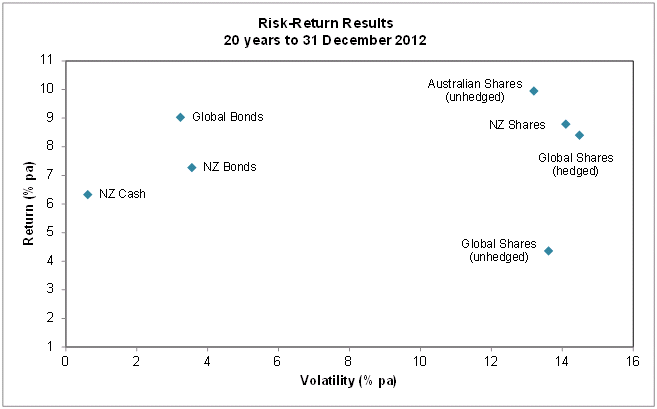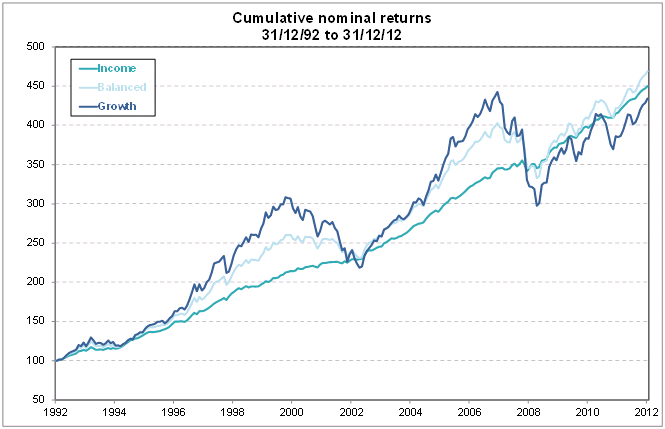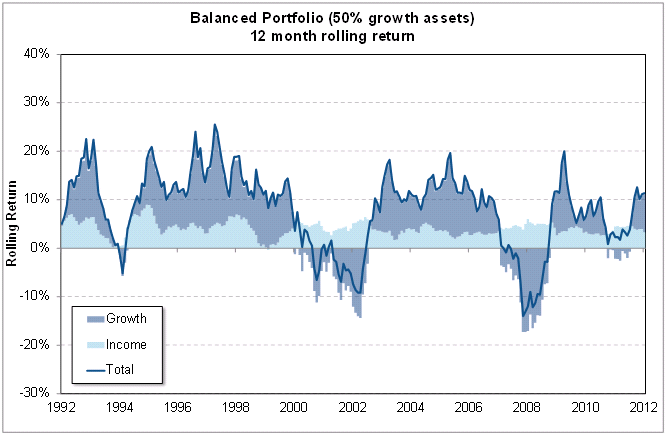

In recent years there has been much debate regarding the appropriate role direct property should play in diversified portfolios. In particular, the property crash of the early 1990’s highlighted that direct property is highly illiquid and more risky than investors had previously thought.
In addition, the argument has emerged that listed property vehicles are a better reflection of the underlying property class than appraisal, valuation-based direct property returns which may not reflect the true "market value".
Prior to 1990 many investors had a fairly naive, if not unrealistic positive, perspective regarding direct property. While the 1990’s experience alerted and reminded investors of direct property’s true characteristics, it did not detract from the fact that direct property has significant value as a diversifier in balanced portfolios.
The key difference between listed property trusts and direct property is that one is a financial asset (like bonds and shares generally), the other a real asset (in that short to medium term performance is highly correlated with real economic activity). This results in markedly different risk/return characteristics which in turn has several critical implications.
First, by combining the two in a diversified property portfolio it is possible to have a better risk/return trade-off than a portfolio invested in one alone.
Second, because listed property trusts and direct property perform at different stages in the economic cycle, it is possible to profit by effectively varying the allocation to each over time. These implications support the case for holding each in a conventional diversified portfolio.
When it comes to specialist investment management, these arguments also support having a single specialist manager for all property assets. The mandate should offer flexibility to move between the two asset classes and thereby to profit from the opportunities referred to above.
More specifically, the benefits of using one specialist manager to manage all property assets are:
Property Investments and the Economic Cycle
Divergent Returns
Over the very long term the return from direct property investment should be broadly the same as that from listed property trusts, assuming identical properties. In reality, of course, identical long term returns are unlikely as the two vehicles differ with respect to:
Price Volatility- listed property being the more volatile as they are subject to day to day price movements;
Liquidity- listed property trusts are more liquid as they are traded on the sharemarket;
Gearing-differing levels of gearing have the potential to affect returns;
Heterogeneous properties- the types and quality of properties that trusts invest in usually differ from that of direct property funds i.e. Listed property trusts usually have more weighting in retail property than direct property funds;
Divergent capabilities- these dictate different levels of returns and risks achieved. Especially on a short to medium term basis (1 to 2 years), where returns between direct and listed property vehicles are likely to diverge dramatically. This has been observed historically with annual return differentials of 20 per cent or so common in some years.
Chart 1: The Divergent Property Cycles
(Australian data)

Reasons for Divergence
The reasons for this short to medium term divergence are not just the valuation lag and the smoothing effect inherent in the appraisal-based valuation process, as some have argued. Instead, the divergence is largely related to the following factors:
Chart 2 : Relative Annual Returns versus Economic Growth

The correlation coefficient between the relative annual returns and year ended GDP growth (lagged three quarters) over the period shown is 0.6. GDP growth has greater explanatory power with a three quarter lag because, in the case of an upturn, direct property appears to perform at its strongest late in a growth upturn when the level of demand is high. This is also the time when short term interest rates are rising, adversely affecting the sharemarket and hence property trust values.
This analysis is reflected in the investment cycle relationship which has long been observed between the performance of various asset classes at different stages in the investment cycle, as shown in a stylised form in Chart 3.
Chart 3 :The Investment/Economic Cycle

From this we infer that:
Correlation coefficients over the period from 1980 to 1996 indicate that this has in fact been the case. These are shown in Table 1.
Table 1: Correlation Coefficients between Various Asset Classes
Portfolio Implications
The implications of these divergent short to medium term return cycles are two fold.
First, a combination of direct property and listed property trusts results in significant diversification benefits. This is illustrated in Chart 4 which shows the risk/return relationship over the last 24 years for various combinations of each asset class.
Chart 4: Risk/Return combinations

Second, flowing from the market inefficiency referred to above, there is a clear opportunity to enhance returns by varying the asset mix between the two asset classes over the course of the investment cycle.
Given this analysis, what approach should investors take to allocating between direct property and listed property trusts? The illiquidity, transaction lags and high transaction costs of direct property mean that it is not feasible to engage in frequent asset allocation shifts between listed property trusts and direct property. Rather, it is preferable to adopt broad medium term asset allocations based on the cyclical outlook for the next two to three years.
Furthermore, intended shifts need to be flagged well in advance of their desired implementation time.
Portfolio Strategy
Asset Allocation
During periods when strong economic growth is anticipated, particularly after an initial growth recovery, the intention would be to be overweight direct property and underweight listed property trusts in order to take advantage of the relationship observed in Chart 2. The opposite would apply during weak periods, particularly after an initial dip into recession.
Essentially this forward looking approach to asset allocation would be driven by 3 inputs:
The five key points
| « Family Trusts: IRD to investigate gifting transactions | King builds an empire » |
Special Offers

© Copyright 1997-2024 Tarawera Publishing Ltd. All Rights Reserved